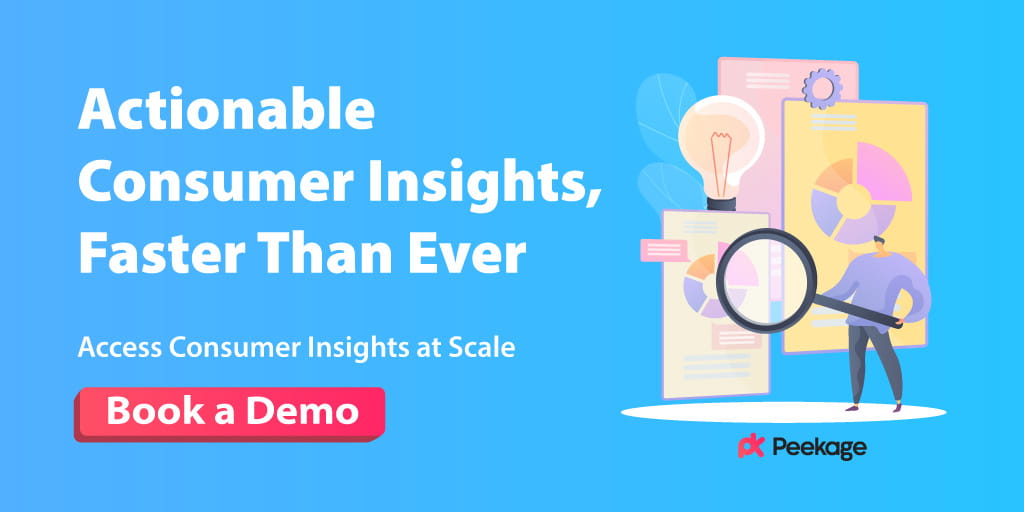Have you ever had a brilliant product idea, only to discover later that it didn't resonate with your target audience? If so, you're not alone. Many businesses face this challenge.
But what if you could peek into your customers' minds and gather customer insights before investing in development? What if you could validate your ideas and refine your concepts before committing resources? That's where concept testing comes in.
In this comprehensive guide, we'll explore how concept testing can dramatically increase your chances of product success, save you from costly mistakes, and help you create products your customers will love. Whether you're a startup founder or a seasoned product manager, mastering concept testing could be the difference between your next big win and your next big disappointment.
Let's dive in and discover how to turn your product ideas into market successes.
What is Concept Testing?
Concept testing is the process of evaluating consumer response to a product idea before it hits the market. It helps brands understand whether their concept resonates with their target audience and identifies areas for improvement. By gathering feedback early, companies can make data-driven decisions that reduce the risk of product failure.

Why is Concept Testing Important?
Concept testing is crucial because 95% of new products fail, often due to a lack of alignment with real customer needs and desires. Each failure represents wasted time, money, and missed opportunities that could sink a business. By implementing concept testing, companies can ensure their product ideas resonate with the target market, leading to several key benefits:
- Reduces risk: By testing ideas early, you can avoid costly mistakes and focus on those with the highest potential.
- Improves product-market fit: Feedback from your target audience helps refine concepts to better meet customer needs and validate market potential.
- Saves time and resources: Identifying winning concepts early streamlines the development process and optimizes resource allocation.
- Enhances decision-making: Data-driven customer insights support more informed choices about product features, positioning, and marketing strategies.
- Guides iteration: Consumer feedback can inform product improvements throughout the development cycle.
- Provides competitive intelligence: Testing can reveal how your concept compares to existing solutions in the market.
- Identifies potential challenges: Early testing can uncover potential obstacles or concerns that might affect product adoption.
- Aligns stakeholders: Concept testing results can help create consensus among team members and investors.
Types of Concept Testing
There are several approaches to concept testing, each with its own strengths and use cases. Here are some of the main ones:
a) Monadic Testing
In monadic testing, each participant evaluates a single concept in isolation. This method provides a focused assessment of each idea without the influence of comparisons.
b) Sequential Monadic Testing
Similar to monadic testing, but participants evaluate multiple concepts one after another. This approach allows for some comparison while maintaining individual focus on each concept.
c) Comparative Testing
Participants directly compare two or more concepts side by side. This method is useful for identifying preferences between competing ideas.
d) Protomonadic Testing
This hybrid approach combines elements of monadic and comparative testing. Participants first evaluate concepts individually and then compare them directly.
e) Concept Screening
Used to quickly evaluate a large number of concepts, this method helps narrow down options to the most promising ideas for further testing.
| Type of Concept Testing | Description | Strengths | Best Used For |
| Monadic Testing | Participants evaluate a single concept in isolation without any comparison to other concepts. | Eliminates bias from comparison, simple analysis | Focused assessment of individual concepts |
| Sequential Monadic Testing | Participants evaluate multiple concepts one after another, each in isolation. | Combines depth of monadic testing with some comparative insights | Understanding relative performance without direct comparison |
| Comparative Testing | Participants compare two or more concepts side by side. | Direct preference insights, clear comparisons | Identifying the most preferred concept among alternatives |
| Protomonadic Testing | Combines elements of monadic and comparative testing; participants evaluate each concept individually before making comparisons. | Comprehensive insights, balances depth and comparison | In-depth evaluation followed by preference determination |
| Concept Screening | Evaluates a large number of concepts quickly to filter out less promising ones. | Efficient, handles large volumes of concepts | Early-stage testing to narrow down options |
The Concept Testing Process
To conduct effective concept testing, follow these key steps:
- Define your objectives
- Identify your target audience
- Develop your concepts
- Choose your testing method
- Create your survey or discussion guide
- Recruit participants
- Conduct the test
- Analyze the results
- Make data-driven decisions
Let's dive deeper into each of these steps:
1. Define Your Objectives
Before starting, clearly outline what you hope to achieve through concept testing. Are you looking to:
- Validate a new product idea?
- Compare multiple concepts?
- Refine existing product features?
- Understand pricing sensitivity?
Having clear objectives will guide your entire testing process.
Example: When Apple was developing the first iPhone, their primary objective was to validate whether consumers would embrace a mobile device that combined a phone, internet communicator, and music player.
2. Identify Your Target Audience
Who is your ideal customer? Define your target demographic, psychographic, and behavioral characteristics. This ensures you're gathering feedback from the right people – those most likely to use your product.
Example: Netflix, when testing its streaming service concept, focused on tech-savvy early adopters who were already familiar with DVD rentals.
3. Develop Your Concepts
Create clear, concise descriptions of your product ideas. These should include:
- Key features and benefits
- Visual representations (sketches, mockups, or prototypes)
- Proposed pricing (if relevant)
- Unique selling propositions
Remember, the goal is to communicate the essence of your idea effectively.
Example: As an example of concept testing, Tesla's concept for the Cybertruck included a unique angular design, "unbreakable" windows, and exceptional towing capacity - all communicated through detailed renderings and specifications.
4. Choose Your Testing Method
Select the most appropriate testing method based on your objectives and the nature of your concepts. For example, if you're comparing multiple ideas, comparative testing might be ideal. If you're refining a single concept, monadic testing could be more suitable.
Example: Coca-Cola famously used blind taste tests when developing New Coke, comparing it to both Pepsi and the original Coca-Cola formula.
5. Create Your Survey or Discussion Guide
Develop a set of questions or topics that will help you gather the consumer insights you need. Consider including:
- Overall appeal
- Purchase intent
- Perceived value
- Uniqueness
- Relevance to customer needs
- Areas for improvement
For quantitative surveys, use a mix of closed-ended (e.g., rating scales) and open-ended questions. For qualitative discussions, prepare a guide with key topics and potential follow-up questions.
Example: When testing new features for its platform, Airbnb might include questions about ease of use, perceived value, and likelihood to use, along with open-ended questions about potential concerns.
6. Recruit Participants
Find participants who match your target audience profile. You can do this through:
- Customer databases
- Social media
- Market research panels
- Specialized recruitment agencies
Platforms like Peekage can be particularly useful for reaching consumers willing to participate in product sampling and research campaigns from the comfort of their homes.
Example: When testing new workout equipment, Peloton recruited fitness enthusiasts who already owned home exercise equipment, reaching them through fitness blogs and social media groups.
7. Conduct the Test
Administer your survey or facilitate your discussions. For online surveys, use a reliable platform that can handle your sample size and question types. For in-person or virtual discussions, ensure you have a skilled moderator to guide the conversation.
Example: Amazon is another good example of concept testing. It often uses A/B testing on its website, showing different versions of a new feature to different user groups and comparing engagement metrics.
8. Analyze the Results
Once you've collected your data, it's time to dig into the insights. Look for:
- Overall trends and patterns
- Differences between demographic groups
- Unexpected findings or surprises
- Areas of strong positive or negative feedback
Use statistical analysis for quantitative data and thematic analysis for qualitative responses.
Example: When Spotify tested its Discover Weekly feature, they likely analyzed not just overall satisfaction scores, but also differences in response between heavy users and casual listeners.
9. Make Data-Driven Decisions
Based on your analysis, decide how to move forward with your concepts. This might involve:
- Selecting the most promising concept for further development.
- Refining concepts based on feedback.
- Abandoning ideas that didn't resonate with your audience.
- Identifying new opportunities or unmet needs.
Example: Based on concept testing results, Dropbox decided to pivot from its initial idea of a standalone app to a more integrated file-syncing service that worked within users' existing folder structures.

Best Practices for Concept Testing
To get the most out of your concept testing efforts, keep these best practices in mind:
- Present concepts clearly and concisely: Ensure concepts are easily understandable for participants.
- Optimize survey length: Keep surveys focused and brief to maintain response quality.
- Frame questions neutrally: Avoid leading or biased inquiries to get authentic responses.
- Ensure statistical significance: Use a sufficient sample size representative of your target audience.
- Offer participation incentives: Offer rewards to boost response rates and diversity.
- Consider competitive context: Evaluate your concept against existing market solutions.
- Iterate based on insights: Use feedback to refine concepts between testing rounds.
- Employ mixed methods: Combine quantitative and qualitative approaches for comprehensive understanding.
- Time strategically: Test early enough to influence development, but with well-formed ideas.
- Maintain objective perspective: Be open to both positive and negative feedback for constructive improvement.
- Segment your audience: Test with different user groups to understand varied perspectives.
- Use visual aids: Incorporate images or prototypes to enhance concept understanding.
- Conduct follow-up interviews: Gain deeper insights from selected participants after initial testing.
- Analyze results thoroughly: Look for patterns and unexpected findings in the data.
- Involve cross-functional teams: Include diverse perspectives from marketing, product, and design teams in the testing process.
Common Challenges and Pitfalls in Concept Testing and How to Overcome Them
Concept testing is a crucial step in product development, but it's not without its challenges. Here, we explore some common pitfalls and provide strategies to overcome them:
- Biased Sampling Challenge: Selecting a sample that doesn't accurately represent your target market.
- Solution: Use diverse recruitment methods and implement quotas to ensure demographic representation.
- Leading Questions Challenge: Phrasing questions in a way that influences respondents' answers.
- Solution: Use neutral language and have multiple team members review questions for bias.
- Confirmation Bias Challenge: Interpreting results to confirm preexisting beliefs about the concept.
- Solution: Involve diverse stakeholders in analysis and actively seek out contradictory evidence.
- Overreliance on Quantitative Data Challenge: Focusing solely on numeric data while ignoring qualitative insights.
- Solution: Implement a mixed-method approach, combining surveys with interviews or focus groups.
- Timing Issues Challenge: Conducting tests too late in the development process to make meaningful changes.
- Solution: Integrate concept testing early and throughout the product development lifecycle.
The Future of Concept Testing
As technology evolves, so do the methods and tools available for concept testing. Here are some trends to watch:
- Virtual and Augmented Reality: These technologies allow for more immersive concept testing experiences, particularly useful for physical products or environments.
71% of customers say they would shop more frequently if they could use AR to try products before purchasing.
- AI and Machine Learning: Advanced analytics can help identify patterns and insights from large datasets more quickly and accurately.
- Real-Time Feedback System: Tools that allow for instant feedback collection and analysis are becoming more prevalent, enabling faster iteration cycles.
- Mobile-Optimized Methods: With the increasing use of smartphones, mobile-optimized concept testing methods are becoming essential.
- Behavioral Data Integration: Combining stated preferences from surveys with actual behavioral data can provide a more complete picture of consumer reactions.
- Predictive Modeling: Advanced statistical techniques can forecast potential market performance based on concept testing results.
- Emotion Recognition: AI-driven tools can analyze facial expressions, voice tones, and text sentiment to gauge emotional responses to concepts.
- Gamification: Incorporating game-like elements into testing can increase engagement and yield more authentic responses.
- Cross-Platform Testing: Evaluating concepts across multiple digital platforms to account for varying user experiences.
- Neuroscience Applications: Using brain-scanning technologies to directly measure cognitive and emotional responses to concepts.
Conclusion
Concept testing is a crucial step in the product development process that can save companies time, money, and resources. By gathering valuable feedback early on, businesses can refine their ideas, minimize risks, and increase the chances of market success.
Effective concept testing requires careful planning, the right methodologies, and a willingness to iterate based on results. Remember, the goal isn't just to validate your concept, but to gain insights that will help you create products that truly resonate with your target audience. Embrace concept testing as an ongoing practice, and you'll be well-equipped to bring innovative, user-centered products to market.
FAQs
1. How to test a product concept?
To test a product concept, you can:
- Conduct market research to understand customer needs.
- Create a prototype or mockup.
- Gather feedback through surveys, focus groups, or user testing.
- Analyze the feedback to identify potential improvements.
- Adjust the concept based on insights and retest if necessary.
2. What is a UX concept test?
A UX concept test evaluates a product's user experience by gathering feedback on its design, functionality, and usability through prototypes or mockups, helping to identify areas for improvement before full development.
3. What are concept test methodologies?
Concept test methodologies include surveys, focus groups, A/B testing, prototyping, usability testing, and interviews to gather feedback on product ideas and evaluate their potential success.
4. What is basic testing concepts?
Basic testing concepts involve verifying that a product meets its requirements and functions correctly through various methods such as unit testing, integration testing, system testing, and acceptance testing.
5. What is the concept testing stage?
The concept testing stage is the phase where a product idea is evaluated using feedback from target users to determine its viability, appeal, and potential for success before proceeding to development.
References
- The different types of usability testing methods for your projects, Hotjar,
https://www.hotjar.com/usability-testing/methods/ - New Product Development Process: Everything You Need to Know, Hubspot,
https://blog.hubspot.com/marketing/product-development-process - The ultimate guide to market research: How to conduct it like a pro, Qualtricks,
https://www.qualtrics.com/experience-management/research/market-research-guide/ - How To Create a Successful Product Launch in 6 Steps, Shopify,
https://www.shopify.com/blog/product-launch - How to make sure your next product or service launch drives growth, Mckinsey,
https://www.mckinsey.com/capabilities/growth-marketing-and-sales/our-insights/how-to-make-sure-your-next-product-or-service-launch-drives-growth - Launching A New Product [Timeline Guide], Askattest,
https://www.askattest.com/blog/articles/launching-a-new-product-timeline-guide




